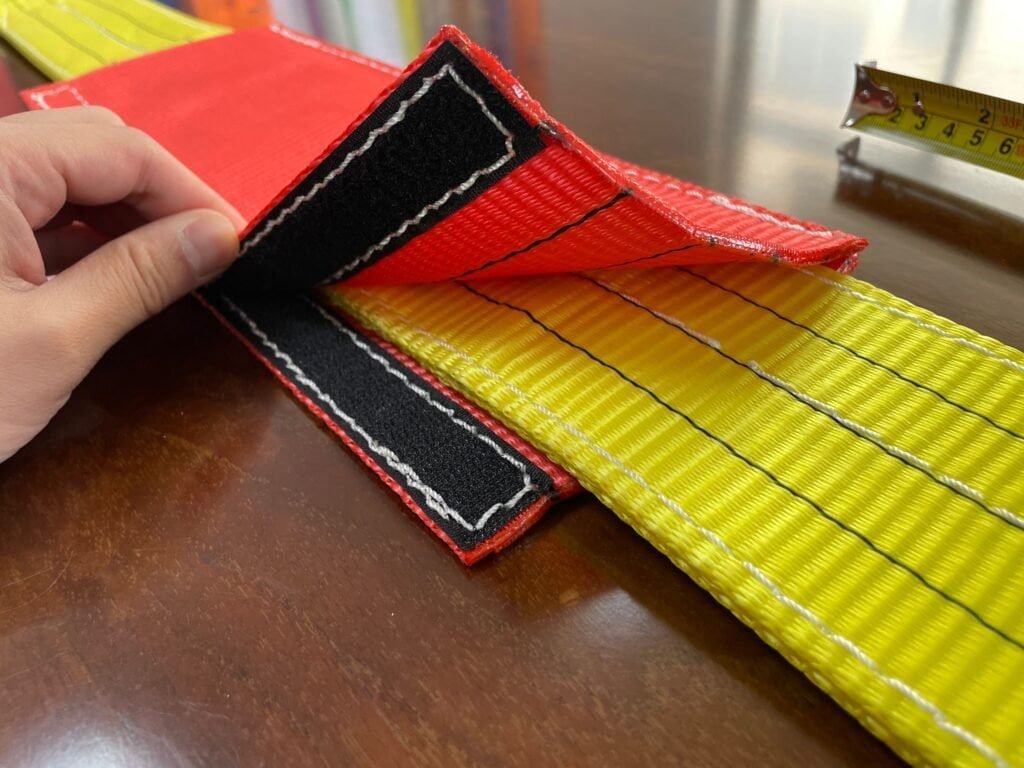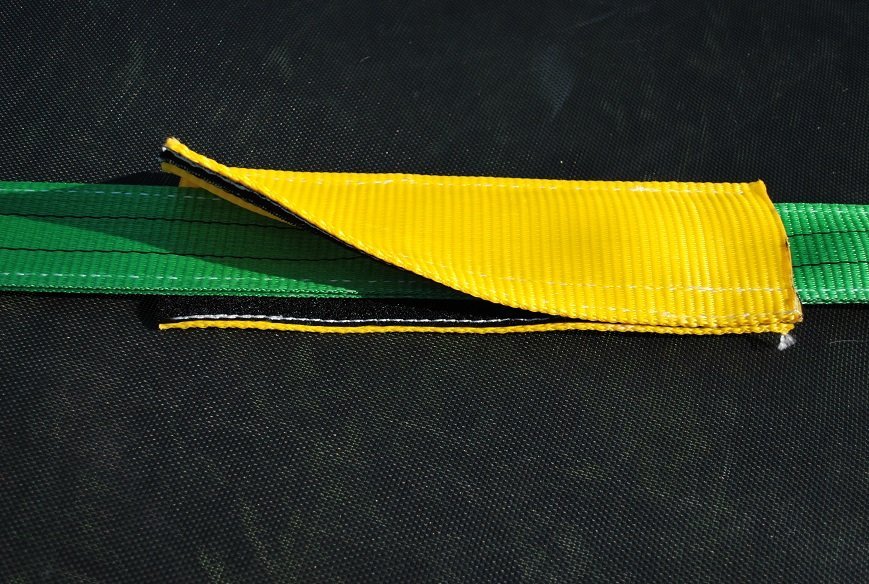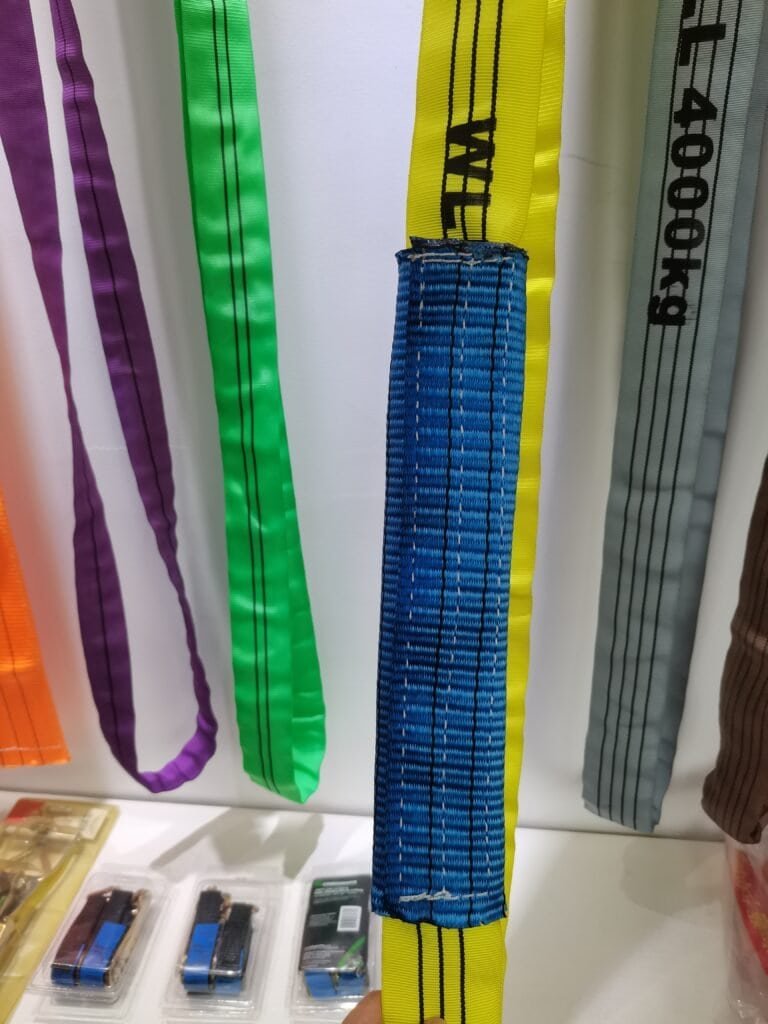Introduction
Lifting slings are commonly used to lift and transport heavy objects in a variety of industries. A protection sleeve is an outer covering used to protect the sling from wear and tear or damage during use. However, different sheath materials may have an impact on the durability of the sling. So, which sheath material is best for the durability of the sling?
What is a Lifting Sling Protection Sleeve?

A lifting sling protection sleeve is an additional layer of material that wraps around the lifting sling to protect it from external damage. Protection sleeves are typically made from durable fabrics like polyester, nylon, or Kevlar, designed to prevent abrasions, cuts, UV damage, and chemical wear.
Why Protection Sleeves are Essential for Lifting Slings
Prevent Abrasions and Wear
- Protection sleeves guard against abrasions from rough surfaces, minimizing wear on the sling’s fabric.
- This is especially important in industrial environments where slings are often exposed to harsh conditions.
Extend Sling Lifespan
- By reducing direct contact with abrasive materials, protection sleeves can significantly extend the lifespan of your lifting sling.
- Slings without protection sleeves tend to degrade more quickly, leading to premature replacements.
Improve Safety
- A damaged lifting sling can compromise safety, causing load failure and accidents.
- Protection sleeves reduce the likelihood of damage, ensuring the sling continues to perform at its optimal capacity.
UV and Chemical Protection
- UV exposure can weaken slings over time, while certain chemicals can degrade their fibers.
- Protection sleeves shield slings from UV rays and chemical exposure, maintaining their strength and integrity.
How many options are available for protection sleeves?

1. Nylon Sleeve
Advantages:
- High Wear Resistance: Nylon material has excellent wear resistance, effectively extending the service life of the sling.
- Flexibility: Nylon sleeves are very flexible and can protect the sling well from scratches by hard objects.
- Lightweight: Nylon sleeves are relatively light and do not add much weight to the sling.
Disadvantages:
- Poor Heat Resistance: Nylon is not resistant to high temperatures, and prolonged use in high-temperature environments may damage the sleeve.
- Average Chemical Resistance: Certain chemicals can damage nylon, so care must be taken to avoid contact.
2. Polyester Sleeve
Advantages:
- Good Wear Resistance: Polyester material has wear resistance similar to nylon, providing good protection for the sling.
- UV Resistance: Polyester has good resistance to UV rays, making it suitable for outdoor use.
- Chemical Resistance: Polyester has better resistance to various chemicals compared to nylon, making it more suitable for environments with chemical substances.
Disadvantages:
- Less Flexibility: Polyester sleeves are slightly stiffer than nylon, which may make them less flexible in some applications.
3. Polyurethane Sleeve
Advantages:
- Excellent Wear Resistance: Polyurethane has very high wear resistance, especially suitable for extreme wear conditions.
- Cut Resistance: Polyurethane has strong cut resistance, effectively preventing the sling from being cut by sharp objects.
- Good Elasticity: Polyurethane has good elasticity, which can absorb some impact.
Disadvantages:
- Higher Cost: Polyurethane material is more expensive, increasing the cost of the sleeve.
- Heavier Weight: Polyurethane sleeves are slightly heavier than other materials, which may add to the overall weight of the sling.
4. Coated Sleeve
Advantages:
- Multi-functional Protection: Coatings can be chosen for different functions, such as waterproof, oil-proof, high-temperature resistance, etc.
- High Customizability: Coatings can be customized for specific use environments, providing targeted protection.
Disadvantages:
- Aging: Some coating materials may age over time, affecting the protection effect.
- Difficult to Repair: Once the coating is damaged, it is difficult to repair and often requires replacing the entire sleeve.
When selecting the appropriate protection sleeve, it is important to consider the specific use environment, the material of the sling, and the working load to ensure the safety and longevity of the sling.
Factors to Consider When Choosing the Right Protection Sleeve

Material Compatibility
- Choose a sleeve made of material that complements the lifting sling’s fabric. Polyester and nylon are popular choices due to their strength and resistance to abrasion.
- For environments involving high temperatures or chemical exposure, consider specialized materials like Kevlar or fiberglass.
Environmental Conditions
- Consider where and how the sling will be used. For example, if you’re using a lifting sling in an outdoor setting with UV exposure, opt for a UV-resistant protection sleeve.
- If the sling is used near sharp edges or heavy machinery, a thicker, more durable sleeve may be necessary.
Size and Fit
- Ensure that the protection sleeve fits securely around the lifting sling without slipping off or bunching up during use.
- Choose a sleeve that is the right size for your sling, ensuring full coverage of high-risk areas such as the load-bearing sections.
Ease of Installation
- Protection sleeves should be easy to install and remove without damaging the sling. Some sleeves are designed with Velcro closures for quick application and removal, while others are slip-on designs.
Cost vs. Longevity
- While higher-end protection sleeves may have a higher initial cost, they often provide better durability and longer lifespan, offering better value in the long run.
How to correctly install the sheath to ensure safe use of the sling?

The steps to properly install a sling cover include:
- Inspect the sling and cover: Before you begin installation, first inspect the lifting slings and covers for any visible damage or wear. Any damaged equipment should not be used.
- Choose the correct cover: Depending on the type of sling and the environment in which it will be used, choose the appropriate cover. For example, a special cover may be required for a sling that will be used in a high-temperature or chemical environment.
- Install the cover: Slide the cover over the sling, making sure it completely covers the working part of the sling. The cover should be tight enough to prevent sliding or moving during use.
- Ensure the correct position of the cover: The cover should be located in the working area of the sling, where the sling contacts the load. This prevents the sling from being worn during use.
- Safety check: After installing the cover, a safety check should be performed to ensure that the cover has been installed correctly and that the sling does not have any visible damage or wear.
When should the protection sleeve be replaced?

The timing for replacing the sheath mainly depends on the following factors:
- Wear and tear of the sheath: If the sheath shows cracks, wear, damage, or other obvious damage, it should be replaced immediately.
- Frequency of use: If the sling is frequently used, the sheath may wear out faster and need to be replaced more frequently.
- Operating environment: In certain harsh environments, such as high temperatures, chemicals, or under the influence of ultraviolet rays, the sheath may degrade faster and need to be replaced more frequently.
How to maintain and clean the sheath to extend its service life?
To extend the lifespan of the sheath, the following maintenance and cleaning methods can be adopted:
- Clean the sheath: Regular cleaning of the sheath can help to remove accumulated dirt and dust. Use a gentle detergent and a soft cloth for cleaning, but avoid using abrasive cleaners or brushes to prevent damage to the sheath.
- Check the sheath: The sheath should be checked for any visible damage or wear before and after each use. If any cracks, wear, or damage are found, the sheath should be replaced immediately.
- Store the sheath: When not in use, the sheath should be stored in a dry, cool place, away from direct sunlight and extreme temperature changes. This can prevent the sheath from aging and degrading prematurely.
- Avoid overuse: Although the sheath is designed to protect the sling, overuse or misuse can still lead to premature wear of the sheath. Follow all safety usage guidelines and avoid overloading.
- Regular replacement: Even if the sheath still looks intact, it should be replaced regularly, as the sheath may degrade internally over time, which may not be visible but will affect its performance.
By following these maintenance and cleaning steps, the lifespan of the sheath can be extended, ensuring that it provides optimal protection during use.
Conclusion
The protection sleeve for lifting slings is a crucial safety tool that can protect the slings from damage and prolong their lifespan. Regular cleaning and checking of the sleeve, proper storage, avoiding overuse, and regular replacement of the sleeve are key steps to ensure its performance and durability. By understanding and implementing these maintenance steps, we can maximize work efficiency while ensuring safety in the workplace.